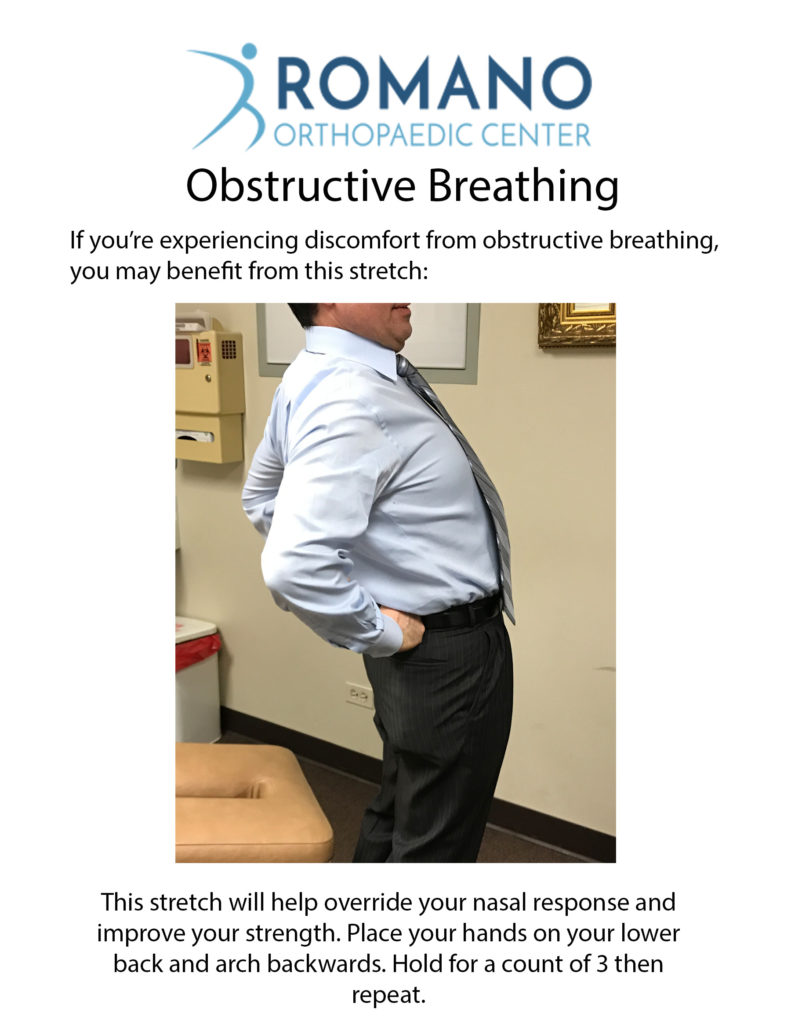Obstructive Breathing
What is Obstructive Breathing?
Obstructive breathing is a common problem that includes any blockage of the nasal passage, sinuses, or throat that inhibits clear breathing. Whether brought on by a cold, flu, allergies, or more consistent causes, obstructive breathing can cause long-term discomfort if left untreated.
 Common Symptoms:
Common Symptoms:
If you have ever had a cold or flu, you’ve experienced symptoms of obstructive breathing to a certain extent. The most common symptoms of obstructive breathing include:
- Sinus and nasal congestion
- Mouth breathing
- Snoring
Common Causes:
As mentioned above, the common cold or flu can cause obstructive breathing. Similarly, allergies can cause similar symptoms. However, other causes of obstructive breathing include:
- Infections
- Deviated septum
- Enlarged tonsils
- Inflammatory diet
Associated symptoms:
Aside from nasal congestion, mouth breathing, and snoring, obstructive breathing may also cause:
- Loss of stability and balance
- Sleep apnea
- Pain and stiffness of the neck, upper and lower back and pelvis
- Worsening back and shoulder pain at night
- Weakness of shoulder, arms and hips
Treatment for Obstructive Breathing:
Because obstructive breathing is, unfortunately, so common, there are many treatments available to alleviate your symptoms. During your visit, we will work with you to find the cause of your obstructed breathing and implement the best course of treatment for you. Some treatments for obstructive breathing include:
- Diaphragmatic breathing exercises
- Nasal sprays
- Flonase
- Xlear
- Ocean spray
- Saline rinses
- Neti pot
- NeilMed
- Nasal strips
- Nasal dilators
- Humidifiers
- Nasal sprays
- Flonase
- Xlear
- Ocean spray
- Saline rinses
- Neti pot
- NeilMed
- Nasal strips
- Nasal dilators
- Humidifiers
- Allergy medication
- Anti-inflammatory diet
Why is clear breathing so important?
Obstructive breathing is, simply put, uncomfortable. It’s important to be able to get the right amount of air easily, without having to resort to mouth breathing. Additionally, when we were embryos in the womb, 5 weeks after fertilization of the egg, the sympathetic chain separated from our spinal cord. This sympathetic chain controls our heart rate and breathing during our “flight or fight” response. Though the sympathetic chain split from our spinal cord after 5 weeks of development, the association still remains. So, if we are not breathing clearly, our body is inhibiting us from “fight or flight.”
If you are experiencing obstructive breathing, you are also at risk for more serious conditions such as sleep apnea, where you are unable to breath properly without the assistance of a breathing machine used while you sleep.
